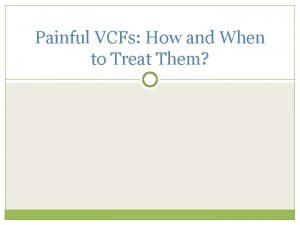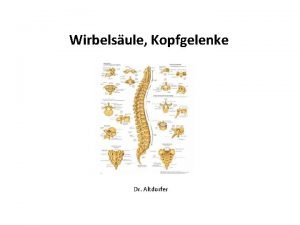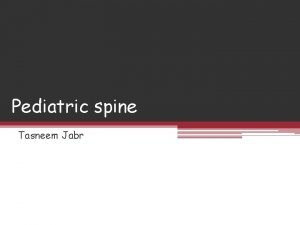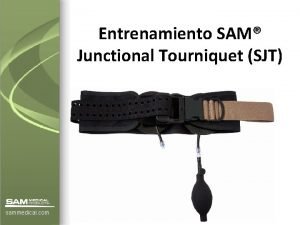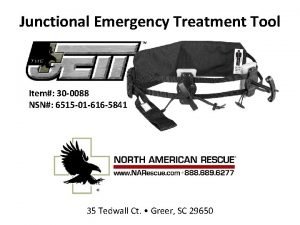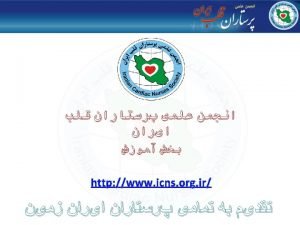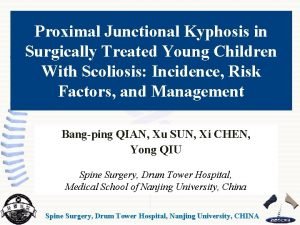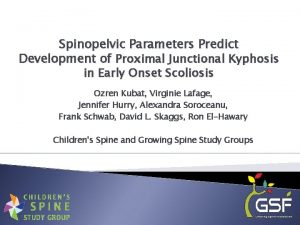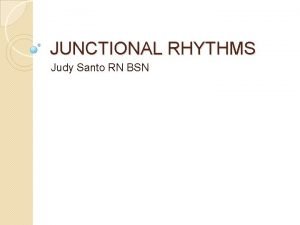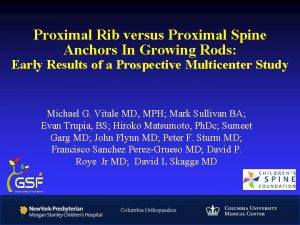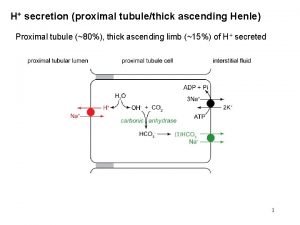THE RATE OF PROXIMAL JUNCTIONAL KYPHOSIS IN DUAL









- Slides: 9

THE RATE OF PROXIMAL JUNCTIONAL KYPHOSIS IN DUAL GROWING ROD TREATMENT WITH PEDICLE SCREWS AS PROXIMAL ANCHOR Hacettepe University Spine Study Group Ankara/TURKEY Saygin Kamaci H. Gokhan Demirkiran Rustam Jalilov Muharrem Yazici

Proximal Junctional Kyphosis (PJK) • One of the potential implant-related complication of growing rod treatment • Incidence; 7 - 56 % • Risk factors : – – – Greater thoracic kyphosis, Greater proximal thoracic scoliosis More proximal level of lower instrumented vertebra Proximal anchor other than Pedicle screw construct Age

AIM • Find out the, rate of PJK in our series treated with standard surgical sechnique • Find predisposed risk factors • Proportion of this ratio with measurement methods

Materials & Methods • 37 children (22 female, 15 male) – – – Idiopathic (10) Congenital (11) Syndromic (5) Myelomeningocele(7) Neuromuscular (3) • Proximal ligamentous and capsular structures were protected during the index surgery and re-exposures • Follow-up time; 63 month ( 24 - 104 ) • Age at time of index operation; 73 month (45 - 138) • Number of lenghts; 9 (3 -14)

• PJK : An angle ≥ 10° increase between the immediate post-op and final follow up values • 4 screw • 3 screw + 2 hook • 2 screw + 2 hook : 33 : 1 : 3

• GSSG tecnique (PJK 1) - One level cephalad to upper instrumented vertebra and lower end plate of the upper instrumented vertebra • SKAGGS tecnique(PJK 2) - Upper end plate of the vertebra two level cephalad to upper instrumented vertebra and lower end plate of the vertebra two level caudal to the upper instrumented vertebra

Results • Overall PJK rate was 7% • 2 patients (6%) were revealed with PJK 1 method • 3 patients (9%) were revelead with PJK 2 method • There is no statistical difference between the two methods (p =? )

Complications – 6/37 (16%) patients had screw pull out or loosening • 2/6 developed PJK

Conclusion • One of the potential implant-related complication of growing rod treatment • With careful surgical technique - rate • Different measurment techniques – does not have a significant increase effect on the PJK rates • Revision of the GSSG measurement technique does not seem to be revised

